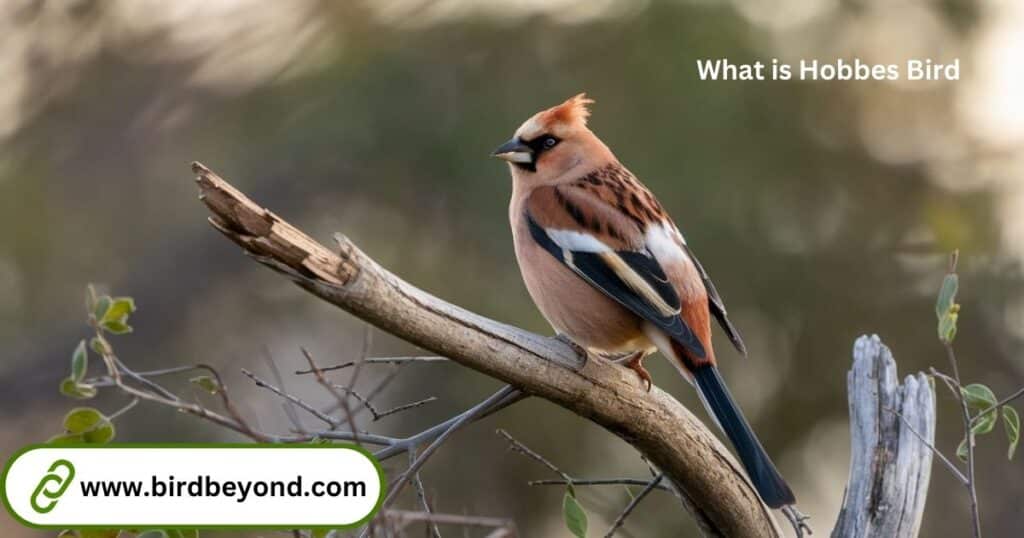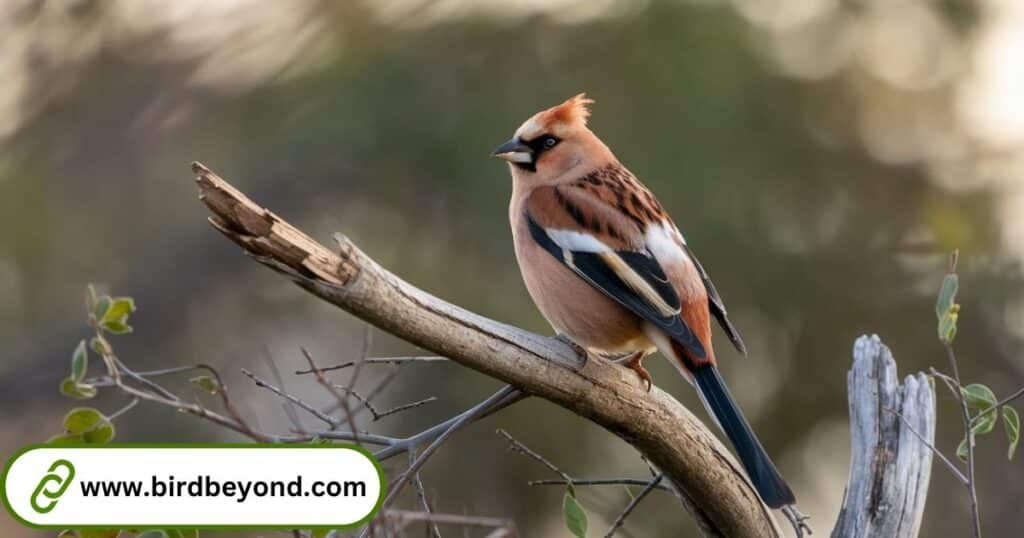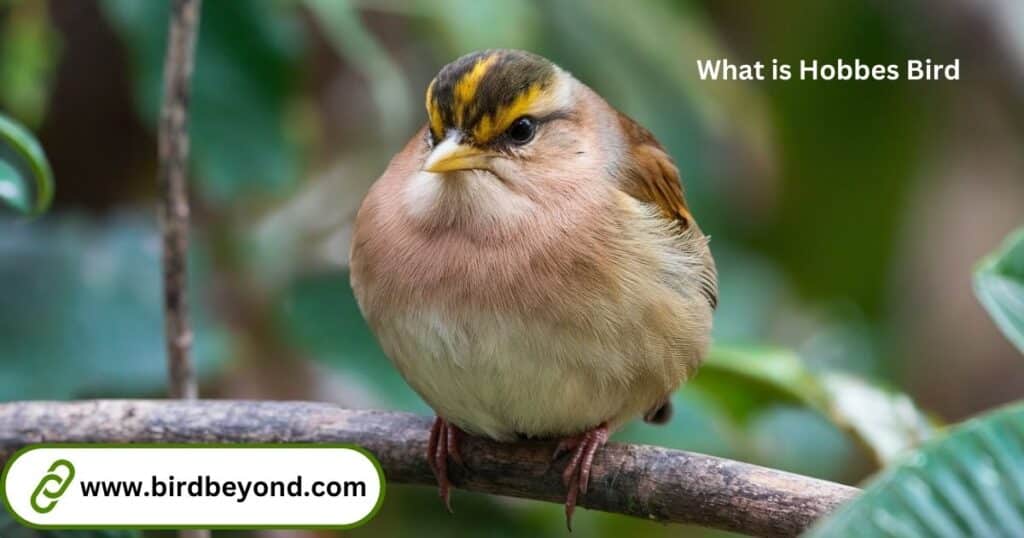This comprehensive exploration unpacks the origins, characteristics, and enduring relevance of the Hobbes Bird in today’s world. By the end, you’ll not only understand what the Hobbes Bird symbolizes but also why its lessons remain vital.
The Hobbes Bird is not a creature you’ll find in the wild. Instead, it exists in the realm of ideas, a metaphorical construct derived from the works of Thomas Hobbes, one of history’s most influential philosophers. This concept illustrates profound truths about human nature, society, and governance. It encapsulates the delicate balance between individual freedom and collective security, a central theme in Hobbes’ philosophy.

Introduction
In philosophy, metaphors often bridge complex ideas with tangible understanding. The Hobbes Bird is one such metaphor, blending Thomas Hobbes’ view of human nature with the symbolism of a bird that reflects societal dynamics. Its wings represent freedom, but its flight depends on structure—laws, norms, and governance.
This blog explores:
- The historical context of the Hobbes Bird.
- Philosophical significance and key characteristics.
- Lessons in modern political and social discourse.
- Critiques and evolving interpretations.
Key Takeaways
- Rooted in Hobbes’ Leviathan, the Hobbes Bird is a metaphor for societal order and human nature.
- It provides insights into balancing freedom and security.
- Its lessons are relevant in understanding modern governance, group behavior, and social contracts.
Understanding the Hobbes Bird: Origins and Background

Who Was Thomas Hobbes?
Born in 1588, Thomas Hobbes was an English philosopher best known for his work Leviathan (1651). Living through tumultuous times—including the English Civil War—Hobbes developed a bleak view of human nature, believing that without governance, life would be “solitary, poor, nasty, brutish, and short.”
| Key Details About Hobbes | Highlights |
|---|---|
| Era | 17th Century Enlightenment |
| Famous Work | Leviathan |
| Core Philosophy | Social contract theory |
| Legacy | Foundational thinker in political philosophy |
Hobbes argued that humans in their natural state existed in constant conflict, driven by aggression, survival instincts, and competition for resources. He proposed that to escape this chaos, individuals must enter a social contract, surrendering some freedoms in exchange for collective security.
The Origin of the Hobbes Bird
The term “Hobbes Bird” itself is a modern metaphor inspired by Hobbes’ philosophies. It is a conceptual bird that represents:
- Survival and conflict: The natural state of humanity.
- Cooperation: The necessity of social structures for coexistence.
- Governance: Rules as the wings enabling societal flight.
Hobbes did not coin this term directly, but thinkers have used avian imagery to simplify and explain his dense ideas.
Philosophical Significance of the Hobbes Bird
Human Nature and Society
The Hobbes Bird embodies Hobbes’ theory that humans are inherently self-serving and prone to conflict without societal rules. Key attributes include:
- Aggressive instincts: Similar to territorial birds fighting for resources.
- Solitary behavior: Representing distrust and isolation in the absence of governance.
- Social contracts: The shift from chaos to cooperation.
Hobbes on Human Nature:
“The condition of man is a condition of war of everyone against everyone.”
The Social Contract and Governance
In Leviathan, Hobbes introduced the social contract theory, where individuals collectively agree to establish a governing authority. This forms the backbone of modern states. The Hobbes Bird symbolizes the balance between:
- Freedom and security: Wings of the bird.
- Order and chaos: Its flight path.
Elements of the Social Contract
| Element | Description |
|---|---|
| State of Nature | Pre-societal chaos; constant conflict. |
| Social Contract | Agreement to surrender some freedoms for peace and security. |
| Leviathan | The metaphorical “sovereign” or authority ensuring order. |
Symbolism of the Bird
Unlike literal birds, the Hobbes Bird is purely metaphorical. However, its traits echo real-world avian behavior:
- Flight: Represents societal progress enabled by governance.
- Flocking: Symbolizes cooperation in groups.
- Predatory instincts: Mirrors human competition and aggression.
Characteristics of the Hobbes Bird
Survival Instincts
The Hobbes Bird operates under the principle of self-preservation:
- Individuals prioritize personal security.
- Resources are fiercely contested.
This reflects Hobbes’ claim that humans, like birds, act aggressively when survival is at stake.
Social Hierarchy
Hobbes believed societies naturally form hierarchies, much like birds establish pecking orders. The Hobbes Bird represents:
- Leaders (dominant birds): Sovereign figures or governments.
- Followers (submissive birds): Citizens adhering to laws.
Comparative Table: Hobbes Bird vs. Real Birds
| Aspect | Hobbes Bird | Real Birds |
|---|---|---|
| Behavior | Philosophical metaphor | Instinct-driven actions |
| Purpose | Symbolize societal dynamics | Survival and reproduction |
| Governance | Reflects laws and social contracts | No formal governance structure |
Modern Relevance of the Hobbes Bird
Insights into Governance
The Hobbes Bird metaphor remains relevant in discussing:
- Freedom vs. Security: The trade-off in modern democracies.
- Social structures: How rules prevent societal collapse.
For example, surveillance laws balance individual privacy with collective safety, echoing Hobbesian principles.
Lessons in Human Behavior
The metaphor explains:
- Group dynamics: Cooperation often stems from shared rules.
- Conflict resolution: Governance reduces resource-driven disputes.
- Societal cohesion: Order emerges when individuals prioritize collective well-being.
Case Study: COVID-19 Pandemic
During the pandemic, governments imposed restrictions (masks, lockdowns) reflecting Hobbes’ idea of surrendering freedoms for security.
Critical Perspectives
Critiques of Hobbesian Philosophy
While influential, Hobbes’ theories have limitations:
- Reductionism: Overemphasizes conflict, ignoring altruism.
- Autocracy risks: Critics argue his sovereign model can justify authoritarianism.
Modern Interpretations
Contemporary thinkers have adapted the Hobbes Bird metaphor to new contexts:
- Digital age: The role of social contracts in online privacy and data security.
- Globalization: How international cooperation mirrors Hobbesian ideas of governance.
Practical Lessons from the Hobbes Bird

Cooperation and Conflict
The Hobbes Bird teaches that balance is key:
- Excessive freedom leads to chaos.
- Excessive control stifles innovation.
Governance and Trust
Societies thrive when:
- Rules are transparent and fair.
- Citizens trust governing authorities.
Key Takeaways
| Lesson | Implication |
|---|---|
| Balance | Freedom and security must coexist. |
| Transparency | Clear social contracts foster trust. |
| Adaptability | Societies must evolve with changing needs. |
Hobbes Bird
The Hobbes Bird is a metaphorical marvel, offering timeless insights into human behavior, governance, and societal structures. By understanding its philosophical roots and modern relevance, we uncover lessons crucial for navigating today’s complex world.
This metaphor not only honors Thomas Hobbes’ legacy but also challenges us to reflect on the structures that enable peace, security, and cooperation in our own societies.
Unveiling the Philosophical Enigma of the Hobbes Bird
The Hobbes Bird stands as a remarkable philosophical construct that transcends traditional metaphorical boundaries. More than a simple allegory, it represents a complex exploration of human nature, social interactions, and the intricate mechanisms that govern human behavior.
Thomas Hobbes, the pioneering 17th-century philosopher, crafted this metaphorical bird as a sophisticated lens to examine the raw, unfiltered essence of human existence. The Hobbes Bird is not merely a theoretical concept but a profound symbolic representation that illuminates the deepest recesses of human psychology, survival instincts, and societal organization.
The Significance of the Hobbes Bird
Understanding the Hobbes Bird provides unprecedented insights into:
- The fundamental drivers of human behavior
- The origins of social structures
- Mechanisms of cooperation and conflict
- Psychological underpinnings of governance
Historical Context: Philosophical Genesis of the Hobbes Bird
Thomas Hobbes: A Biographical Sketch
To comprehend the Hobbes Bird, we must first explore the intellectual landscape of its creator. Thomas Hobbes emerged during a period of extraordinary political and philosophical turbulence in England, characterized by civil war, social upheaval, and intellectual revolution.
Pivotal Life Moments
Period Significant Developments Birth 1588 - During Spanish Armada invasion Intellectual Peak Mid-17th century philosophical writings Major Work Leviathan - published in 1651
The Philosophical Framework of the Hobbes Bird
Hobbes proposed a revolutionary understanding of human nature through the Hobbes Bird metaphor. This conceptual framework challenges traditional perceptions of human interactions by presenting a raw, unfiltered view of survival and social organization.
Core Characteristics of the Hobbes Bird
- Survival-Centric Behavior: Prioritizing individual security
- Resource Competition: Constant struggle for limited resources
- Strategic Self-Preservation: Calculated approach to personal protection
- Conditional Cooperation: Collaborative only when advantageous
Psychological Dimensions: Decoding the Hobbes Bird Metaphor
Survival Instincts and Social Dynamics
The Hobbes Bird serves as a profound psychological metaphor, revealing complex human behavioral mechanisms:
“In such condition there is no place for industry, because the fruit thereof is uncertain… and the life of man, solitary, poor, nasty, brutish, and short.” – Thomas Hobbes
This powerful quote encapsulates the essence of the Hobbes Bird, illustrating the perpetual state of potential conflict in human interactions.
Psychological Traits Explored
- Aggressive Self-Protection: Immediate threat response
- Resource Optimization: Strategic survival mechanisms
- Hierarchical Tendencies: Natural social ordering
- Calculated Cooperation: Temporary alliances for mutual benefit
Contemporary Psychological Validation
Modern psychological research continues to validate Hobbes’ intricate observations:
- Evolutionary psychology confirms inherent survival mechanisms
- Social psychology explores complex group dynamics
- Behavioral economics demonstrates resource-driven decision-making processes
Social Contract Theory and the Hobbes Bird
Transition from Individual Survival to Collective Security
The Hobbes Bird metaphorically represents humanity’s evolutionary journey from isolated survival to organized societal structures. Hobbes argued that rational self-interest ultimately drives humans to establish social contracts that provide collective security and stability.
Fundamental Social Contract Components
- Mutual Agreements: Surrendering absolute individual freedom
- Established Governance: Creating frameworks preventing constant conflict
- Centralized Authority: Implementing mechanisms ensuring social order
- Balanced Individual Rights: Protecting personal freedoms within collective constraints
Modern Democratic Reflections
Contemporary democratic systems embody Hobbes Bird philosophical principles through:
- Constitutional frameworks
- Rule of law
- Balanced institutional powers
- Mechanisms of collective decision-making
Comparative Philosophical Perspectives
Alternative Views on Human Nature
While Hobbes presented a distinctive perspective, other philosophers offered contrasting interpretations:
Philosopher Philosophical Stance Relation to Hobbes Bird John Lock Rational human potential More optimistic cooperative model Jean-Jacques Rousseau Inherent human goodness Challenged aggressive survival narrative Kant Moral rational agency Emphasized ethical individual capabilities
Practical Manifestations of the Hobbes Bird Concept
Real-World Applications
The Hobbes Bird philosophy provides insights into:
- Political system design
- Conflict resolution strategies
- Organizational behavior
- International diplomacy mechanisms
Illustrative Case Studies
Corporate Governance Implementations
Businesses integrate Hobbes Bird principles through:
- Hierarchical organizational structures
- Performance-driven incentive systems
- Systematic conflict resolution protocols
International Diplomatic Strategies
Global interactions reflect Hobbes Bird dynamics via:
- Negotiation frameworks
- Strategic alliance formations
- Power balance maintenance
Critical Evaluation and Limitations
Philosophical Critiques
The Hobbes Bird concept, while groundbreaking, faces scholarly challenges:
- Potential oversimplification of human complexity
- Limited acknowledgment of altruistic tendencies
- Insufficient consideration of cultural variations
Evolving Intellectual Understanding
Contemporary research suggests a more nuanced perspective, recognizing:
- Innate cooperative instincts
- Empathy as a survival mechanism
- Significant cultural influence on behavior
The Transformative Legacy of the Hobbes Bird
The Hobbes Bird remains a powerful philosophical construct that continually illuminates our understanding of human nature, social dynamics, and collective organization.
Fundamental Insights
- Survival drives fundamental human behavior
- Social structures emerge from complex psychological mechanisms
- Understanding collective behavior requires multifaceted analysis
Future Philosophical Explorations
As global challenges become increasingly intricate, the Hobbes Bird philosophy offers critical insights into:
- Collaborative problem-solving strategies
- Institutional design principles
- Conflict prevention mechanisms
Recommended Intellectual Resources
Scholarly Recommendations
- Leviathan by Thomas Hobbes
- The Social Contract by Jean-Jacques Rousseau
- Thinking, Fast and Slow by Daniel Kahneman
Academic Exploration
- “Human Nature and Social Order” – Contemporary Philosophy Review
- “Evolutionary Perspectives on Cooperation” – Psychological Bulletin
The Hobbes Bird invites continuous intellectual exploration, challenging us to look beyond superficial interactions and understand the profound mechanisms governing human existence.
FAQs
1. What is the Hobbes Bird?
The Hobbes Bird is a metaphorical construct derived from Thomas Hobbes’ philosophy. It symbolizes human nature, societal dynamics, and the balance between freedom and governance. Though not a real bird, it serves as a lens to explore Hobbes’ ideas about conflict, cooperation, and social contracts.
2. Did Thomas Hobbes mention the Hobbes Bird in his works?
No, the term “Hobbes Bird” does not appear in Hobbes’ writings. It is a modern metaphor inspired by his ideas, particularly those from his book Leviathan, which discusses human nature and the necessity of governance.
3. What does the Hobbes Bird represent?
The Hobbes Bird represents key aspects of human society:
- Survival instincts: The natural state of conflict without governance.
- Cooperation: The necessity of social contracts to ensure peace.
- Governance: The rules and structures that enable societies to thrive.
Its metaphorical flight symbolizes the balance between individual freedoms (wings) and societal order (flight path).
4. What is the significance of the Hobbes Bird in modern society?
The Hobbes Bird helps explain contemporary issues such as:
- The balance between personal freedom and public security (e.g., laws, surveillance).
- The role of governance in maintaining societal order.
- Group dynamics in communities and organizations.
For instance, during the COVID-19 pandemic, restrictions and regulations mirrored Hobbes’ ideas of surrendering freedoms for collective safety.
5. What is the connection between the Hobbes Bird and the social contract theory?
The Hobbes Bird embodies the principles of Hobbes’ social contract theory, where individuals agree to surrender some freedoms to a governing authority in exchange for security and order. The bird’s survival and ability to fly depend on the balance between freedom (its wings) and governance (its structure).
6. How does the Hobbes Bird compare to real birds?
While symbolic, the Hobbes Bird shares traits with real birds:
- Flocking: Represents cooperation in groups.
- Territorial instincts: Reflects competition and conflict over resources.
- Flight: Symbolizes progress and societal advancement.
However, the Hobbes Bird exists solely as a philosophical metaphor.
7. What are the critiques of the Hobbes Bird metaphor?
Critics argue that:
- It oversimplifies human behavior, focusing too much on conflict and ignoring altruism.
- It may justify authoritarian rule if misinterpreted, as Hobbes’ idea of a sovereign authority is central to the metaphor.
- Modern societies are more complex than the rigid frameworks Hobbes proposed.
8. Can the Hobbes Bird be applied to global issues?
Yes, the Hobbes Bird offers insights into global challenges, such as:
- Climate change: International cooperation mirrors the need for collective action.
- Digital privacy: Balancing individual freedoms with societal security online.
- Global governance: The importance of treaties and organizations to maintain order.
9. Is the Hobbes Bird a relevant concept in the digital age?
Absolutely. In the digital era, the Hobbes Bird metaphor applies to:
- The role of regulations in ensuring online safety (e.g., data privacy laws).
- The need for social contracts in virtual communities to prevent chaos and foster cooperation.
- Balancing personal freedoms with collective responsibility in digital spaces.
10. What lessons can individuals learn from the Hobbes Bird?
The Hobbes Bird teaches us:
- Balance: Striking a harmony between freedom and structure is crucial for personal and societal well-being.
- Cooperation: Trust and collaboration are essential for progress.
- Adaptability: Societies must evolve their “rules of flight” to meet new challenges, just as birds adapt to their environments.
11. How can I learn more about Hobbes and his philosophy?
You can explore Hobbes’ ideas further by:
- Reading his seminal work, Leviathan.
- Studying modern analyses of his social contract theory.
- Following discussions on how Hobbes’ philosophy applies to current events.

William Henry is a distinguished blogger with a flair for avian storytelling. With a wealth of experience, he delivers captivating insights and expert knowledge to Bird Beyond. William’s passion for birds and his engaging writing style make him a standout voice in the birdwatching community, offering readers both valuable information and delightful narratives.







